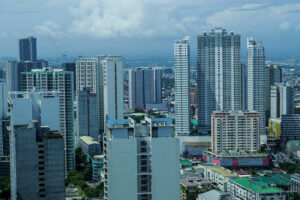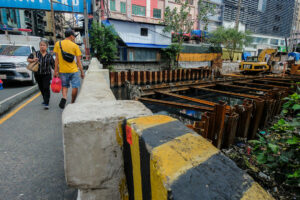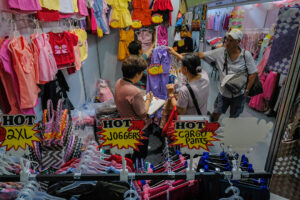By Justine Irish D. Tabile, Reporter
A GARMENT FACTORY in Central Luzon is facing closure, as rising labor costs and increasing pressure from US tariffs weigh on its operations, an industry group said.
“Due to the unfavorable business environment, the latest wage increases, the reciprocal tariff issue, and related circumstances, the company investor is considering closure of a factory in Region 3,” Confederation of Wearables Exporters of the Philippines (CONWEP) Executive Director Maritess Jocson-Agoncillo told BusinessWorld.
“We are trying our best to minimize job loss as of now. We are trying our best to retain jobs,” she added.
At the Department of Trade and Industry’s budget hearing at the Senate on Monday, Senator Maria Imelda “Imee” R. Marcos revealed that a factory producing high-end garments and travel goods is set to close.
“That is 3,000 jobs… I think they are closing… We certainly do not want them to close,” she said, adding that the factory had employed around 10,000 at the height of its business.
In response to this, Trade Secretary Ma. Cristina A. Roque said that the Department of Trade and Industry is trying to help the company address its issues.
“We are still resolving their issues. In fact, I am meeting with them on the 16th… We don’t want them to close; we will really help them as best as we can,” she added.
Foreign Buyers Association of the Philippines (FOBAP) President Robert M. Young said that many factories are considering closure because of the US tariffs.
“There is no significant widespread closure in Region III, however, all the factories are now contemplating layoffs, temporary closure, and suspended work — all kinds of this reduced productivity,” he said in a phone interview.
“This is due to the threat of the US tariffs. Perhaps they were not as lucky as FOBAP that we were able to get some good deals from our US buyers that will share the cost of the tariff,” he added.
The US started imposing a 19% duty on goods from the Philippines on Aug. 17. It is the Philippines’ top export destination, receiving $12.14 billion in shipments last year.
Mr. Young also said that supply-chain issues as well as high costs of doing business are pushing factories to cut production.
“The supply-chain issues are still there due to our poor infrastructure program, and we have high costs of doing business due to power, labor, and logistical costs,” he added.
To address this, Mr. Young said that the garment sector is seeking government support and the creation of US tariff rescue package assistance.
“This can consist of real and honest-to-goodness financial assistance and not the so-called commercialized lending… The government should not make business or money out of a crisis,” he said.
He also said that the government could also help the industry through income tax holidays and suspension of export fees.
“So, the port fees are sometimes also adding up to the cost. So perhaps they can suspend it; we are not asking for them to abolish it but just to suspend it during this tariff crisis or maybe provide some deduction,” he said.
“The other thing they can do is provide power and labor cost subsidies like what Thailand, Vietnam, and the rest of the guys are doing,” he added.
Mr. Young said that the government can implement these measures temporarily to give factories some “fighting spirit” during the crisis.
“All these things will help, but this has to be done immediately and urgently. Time is of the essence,” he said.
“The closures are not happening yet, but before these things happen, the government should already do something, especially now that they know what to do to help. All these together will deduct about 10-15% of the costs,” he added.
In the first eight months, exports of apparel, textile, travel goods and footwear reached $1.127 billion, up 7% from $1.052 billion in the same period last year, data from CONWEP showed.

















